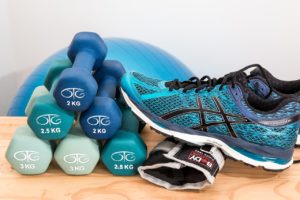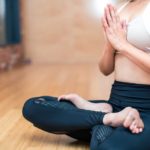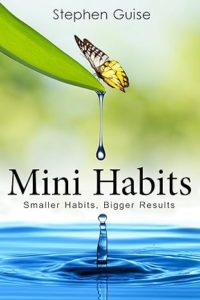Happy New Year
The start of a new year can spark motivation toward taking better care of our bodies. One of the best ways to do that is by keeping active throughout the year and sticking to a regular or semiregular exercise routine. In the Pacific Northwest, New Years also brings rain, gray clouds, wind, and sometimes hail.
In our practice, we enjoy discussing the important role of regular exercise in:
• Hormone metabolism and detox
• Improving mood
• Managing stress
• Energizing the body
• Musculoskeletal and joint health
• Supporting metabolism
• Balancing blood sugar
• Increasing circulation
• Cardiovascular health
• Improving sleep quality
• Aiding in digestion
• Strengthening the body
 That’s quite a long list of benefits from exercise. Unfortunately, just when you want to harness the benefits toward a new year of better health, the weather screams that you’re not going outside today, your hands will feel cold even inside the house, and there may be zero patches of clear sky available for a decent walk.
That’s quite a long list of benefits from exercise. Unfortunately, just when you want to harness the benefits toward a new year of better health, the weather screams that you’re not going outside today, your hands will feel cold even inside the house, and there may be zero patches of clear sky available for a decent walk.
Is it time to just give up then? To keep up with exercise during the new year, we have to outsmart the weather in the PNW.
This winter 2024 issue of our newsletter will cover some simple techniques for not allowing the weather to destroy your ability to benefit from regular exercise.
Two other health challenges that may come up during cold winter months include sluggish circulation and dry skin. We’ll cover simple tips for relieving symptoms in both areas, including an easy yoga pose that can help support circulation, along with a basic skin care tip for preventing dry facial skin.
Finally, we’ll talk about a small but significant shift in mindset that may help you better support your health in the New Year.
Exercise and Mental Resistance
Resistance is a real force that can hold you back from exercising during the wet and cold winter months. Resistance is also a natural response to waking up to the chilly air, gray skies, and at times unrelenting rain.
When you’re dealing with a force like mental resistance, you may want to steamroll it using a plan that sounds like this:
- No matter what, I’m going to hop on the treadmill for 30 minutes, 5 times per week.
You can also replace that fill-in-the-blank with “go to the gym” or “ride my stationary bike” or something along those lines.
For some people, this type of exercise routine works great and there are no issues being consistent with it.
For others, the routine may feel impossible and out of reach, only creating more mental resistance, skipped exercise sessions, guilt, discouragement, and the inadvertent decision to quit exercising altogether.
The tricky part is understanding that even though this exercise routine looks nice on paper and works for some people, it’s not going to work for everyone and it may not be working out well for you.
The “Should be able to do it” voices in your head will tell you to force this strategy to work, or it’s not worth exercising at all.
In order to get back on the horse and increase your chances of staying on it, it helps to make exercise work for you, not against you—especially in the winter.
In 2013, a self-published author named Stephen Guise put out a book called Mini Habits: Smaller Habits, Bigger Results. Today, this book continues to draw readers and gather positive reviews.
His book describes an accessible tool you can use to help overcome mental resistance toward establishing a new habit. The simple tool can help you establish habits for health, as well as habits for work, school, hobbies, etc.
- The user-friendly tool is called a mini habit.
Mini habits help us overcome natural resistance and low motivation that is easy to fall into when you attempt to start or improve on a habit. Mini habits can also help reduce discouraging thoughts that can fester in the mind about not doing enough.
Before we talk briefly about what mini habits are, please consider checking out Stephen’s book if you want to learn why this tool works so well for establishing consistent long-term habits. The book also contains valuable tips, research, and resources that can come in handy for a new year of habits in any area of life. You can click on the book cover or title above to find the book.
On page 19 of Stephen’s book, he describes a mini habit as “a much smaller version of a new habit you want to form.”
For example, if your goal is to do up to 10-20+ pushups, your mini habit would be doing 1 pushup per day as a minimum. You would want to stay consistent with that 1 pushup, daily or on a semiregular basis.
Once you’ve reached your mini goal, like 1 pushup for example, you get bonus for doing more. Getting that one pushup in consistently creates a chain of days that keeps you moving and active regularly. It creates momentum.
Even if you don’t end up doing the bonus, you’ll be happy that you did your mini habit and kept the ball rolling. It’s like Newton’s Law of Motion: An object at rest stays at rest and an object in motion stays in motion (unless either one is acted on by a force).
The only force that can get you in motion is yourself, but holding yourself to impossible standards for exercise will not help you accomplish that goal.
In fact, it’s fairly common for people to set overly high standards or inflexible goals around exercise, or another habit, for the very reason that resistance will come up and we then have “an out.”
Even while trying to get healthy, doubts and fears may surface. We may respond to that fear by creating fitness goals that are inaccessible and therefore offer us an easy out if we don’t reach them.
Seeing how the mind works is a great tool for overcoming resistance to exercise. In other words, acknowledging how you tick works better than denying how you already know that you tick.
If you happen to miss your mini habit on a particular day, it’s no big deal, because getting back to 1 pushup per day is not a huge hill to climb. In other words, there isn’t a disruptive swing in your routine if you were to miss 1 pushup compared to missing 20 that you may have been struggling to shoot for daily.
With a mini habit in place, physical activity can become your friend instead of your arch nemesis that lurks around every corner reminding you that you’re falling short with fitness.
Try not to let exercise become a burden, because once you get the ball rolling, you can actually discover how enjoyable and rewarding exercise can be.
The most basic mini habit for daily or semiregular use can look like:
• 1 pushup
• 1 sit-up
• 1 chin-up
• 1 jumping jack
• 1 squat
• 1 plank held for 1-5 seconds
• 1 stretch, like a toe touch
• 1 yoga or chair yoga pose
• 1 core/balance pose (like standing on 1 leg)
• 1 curl with a weight
• 1 step taken outside for a walk
• 1 basketball shot
• 1 shadowboxing punch
• And so on
Once you’re completing your mini habit on most days, and doing bonus on some or most of the days too, you may want to start playing with the idea of an enhanced or longer mini habit.
First, you can read your body’s signs on strength, flexibility, and recovery time to see what would work best.
Here are some example routines, but there is a lot you can explore as you brainstorm on your own as well:
• Walking 1-3 blocks
• 10 minutes of exercise, any kind
• 5-minute blocks of exercise; you’d do at least 1 block and switch up forms for any bonus blocks (cardio, weights, stretch, pushups, sit-ups, yoga, etc). Keeps variety in your routine
• 30-60 seconds of plank
• 10 minutes of shooting hoops, or trying to get in 5-10 shots
• 5-10 minutes of yoga or Pilates on a mat
• 5-10 minutes of mini trampoline
• 5-10 minutes of exercise bands or light weights
• 5-10 minutes of shadowboxing or punching at a bag
• 5 minutes of jump rope
• And so on
Keep exercise interesting for yourself as much as you can. Switch out forms of exercise occasionally, listen to music, ask a buddy to join you for exercise, or head outside when the sky does clear up a bit. Lean toward physical activity that can feel fun at least some of the time.
If your bigger mini habit ends up being too much for a particular day, you can always fall back on your most basic mini habit of 1 repetition.
A benefit of mini habits is avoiding yo-yo or crash exercise habits—in other words, doing level 100 on certain days and then 0 on many days. Yo-yo habits can be hard on the body and aren’t that supportive of metabolism and fitness.
There’s also reduced risk of injury with slowly building strength in your body rather than vacillating between 0 and 100. Recovery after exercise works better as well.
In the long run, you may end up sticking with mini habits or deciding on a 20–30-minute routine that you feel good about doing consistently.
If you do gravitate toward a 20-30-minute routine, you will have helped your body get there gradually using mini habits. The gradual building of strength and cardiovascular fitness can work more effectively than forcing your body toward an unrealistic goal all at once.
The two styles of mini habits are always available to you in case something changes with your lifestyle and you need to fall back on a simpler routine temporarily.
The key word for exercise is consistency, and to get there you often have to grapple with mental resistance first. A mini habit can help you do that.
Cleansers that Won’t Leave you Dry
 During the winter, dry facial skin can be a problem.
During the winter, dry facial skin can be a problem.
In addition to impaired or sluggish circulation compared to the summer months, which limits inner hydration to the skin’s layers, moisture also leaves the skin’s surface more easily in colder weather.
Cleansing your skin is important in the winter. Dry and flaky skin cells can clog pores, leading to skin issues such as acne, sensitivity, itching, increased dryness, and dull skin. But it’s tricky to find a cleanser for your routine that won’t dry out your skin.
- It can help to use a gentle or hydrating cleanser during the winter that matches your skin type. Here are 4 cleansers that don’t dry out your skin (click on each product name for more information):
- Maelove, Sheer Silk Face Cleanser – This is a creamy gentle cleanser for dry and sensitive skin. This product acts like a cleanser while also hydrating your skin using ceramides and hyaluronic acid. Gentle enough to use daily at nighttime or if needed twice a day and after workouts. Skin is soft and soothed afterward. Work into wet skin with fingertips using gentle circular motions. Rinse completely. Follow with rest of routine.
- Antu Refreshing Gel Cleanser – A non-drying purifying cleanser for those who have normal to oily skin or a T-Zone. Preserves the skin’s lipid barrier. Contains antioxidants, fatty acids, soap bark, and coconut. Follow same steps as for the cleanser above.
- Shaant Balancing Foaming Cleanser – Gentle foaming cleanser for all around oily skin. Doesn’t dry out the skin, which sometimes creates even more oil. Contains micellar water and Ayurvedic herbs to balance oil, such as Patchouli and Gotu Kola. Dispense one pump and work into wet skin, rinsing off after 30-60 seconds.
- Furtuna Cleansing Oil Balm – Great for all skin types, including acne prone and sensitive skin and for those who wear makeup. This balm contains the 2-step double cleansing process in one product. Created with olive oil and olive leaf, it cleanses the skin while also moisturizing. Rub a small amount between hands to warm up. Massage gently into dry skin. Add a little water to create a creamy lather and work into skin more. Then rinse off thoroughly using lukewarm water. ***The code Patel15 gives you 15% off at checkout
Before heading outside, those with dry or chapped skin can apply rosewater or other hydrating toner mixed with a hydrating serum, followed by 1-2 drops of facial oil on skin that’s slightly damp/dewy from the rosewater.
For a full list of cleansers, please check out our collection of recommended cleansers. And don’t forget to drink water to support skin hydration from the inside!
Improving Circulation
 You may notice signs that circulation has slowed down during the winter. Typical symptoms can include cold hands and feet, numbness and tingling in the extremities, swelling, or brittle nails. Your hair may also feel dry.
You may notice signs that circulation has slowed down during the winter. Typical symptoms can include cold hands and feet, numbness and tingling in the extremities, swelling, or brittle nails. Your hair may also feel dry.
A simple yoga pose that can help improve circulation is called the wallflower pose. Basically, you lie on your back near a wall and scoot your bottom up toward it until you can rest your legs vertically up against the wall. Make sure your knees, legs, and low back are comfortable in this pose. If there’s any strain, try scooting a bit farther from the wall or using a yoga mat.
- Hold the pose for up to 5 minutes and do this every day, or every 1-2 days. This simple pose can be quite relaxing.
Along with the pose, make sure you’re warm enough with added layers of clothing, and drink water too. Compression socks/shorts/pants that fit well for your size can also help improve circulation, along with thin fingerless gloves.
Vitamin D has been researched in its ability to relax blood vessels and support circulation. You can either get tested first to assess your baseline level or if you have historically low levels, you can supplement with 2,000 IU vitamin D3 per day during the winter. Take with a meal that contains some fat for best absorption. Vitamin D helps support mood, the immune system, and overall hormone balance.
Omega-3 fatty acid supplementation can also help improve circulation, or you can add healthy fats containing omega-3 to your meals.
New Year’s Mindset
 Is New Years about becoming a new and improved you?
Is New Years about becoming a new and improved you?
Always striving for improvement can create the impression that there was a lot wrong to begin with that needs fixed.
We’ve used the word ‘improve’ in this post, but it’s important to mention that it’s not the whole person who gets revamped into a 2.0 version. We’re not smartphones that continue to upgrade; we’re human beings.
You can use what you learned last year about your health to continue on the journey this year. All the experiences are valuable, even where gaps and frustrations may have appeared last year when you were trying to get fit or stay healthy.
Do you need to explain to anyone else or prove to anyone else what you’re capable of? It’s not about other people. Keep it focused on yourself, because too often fitness can become a comparison these days. You don’t need to become version 2.0; just do exercise and health your way.
For more support in establishing a mini habit or routine for exercise, or for specific product recommendations toward circulation or joint support, please contact us to schedule an appointment.

